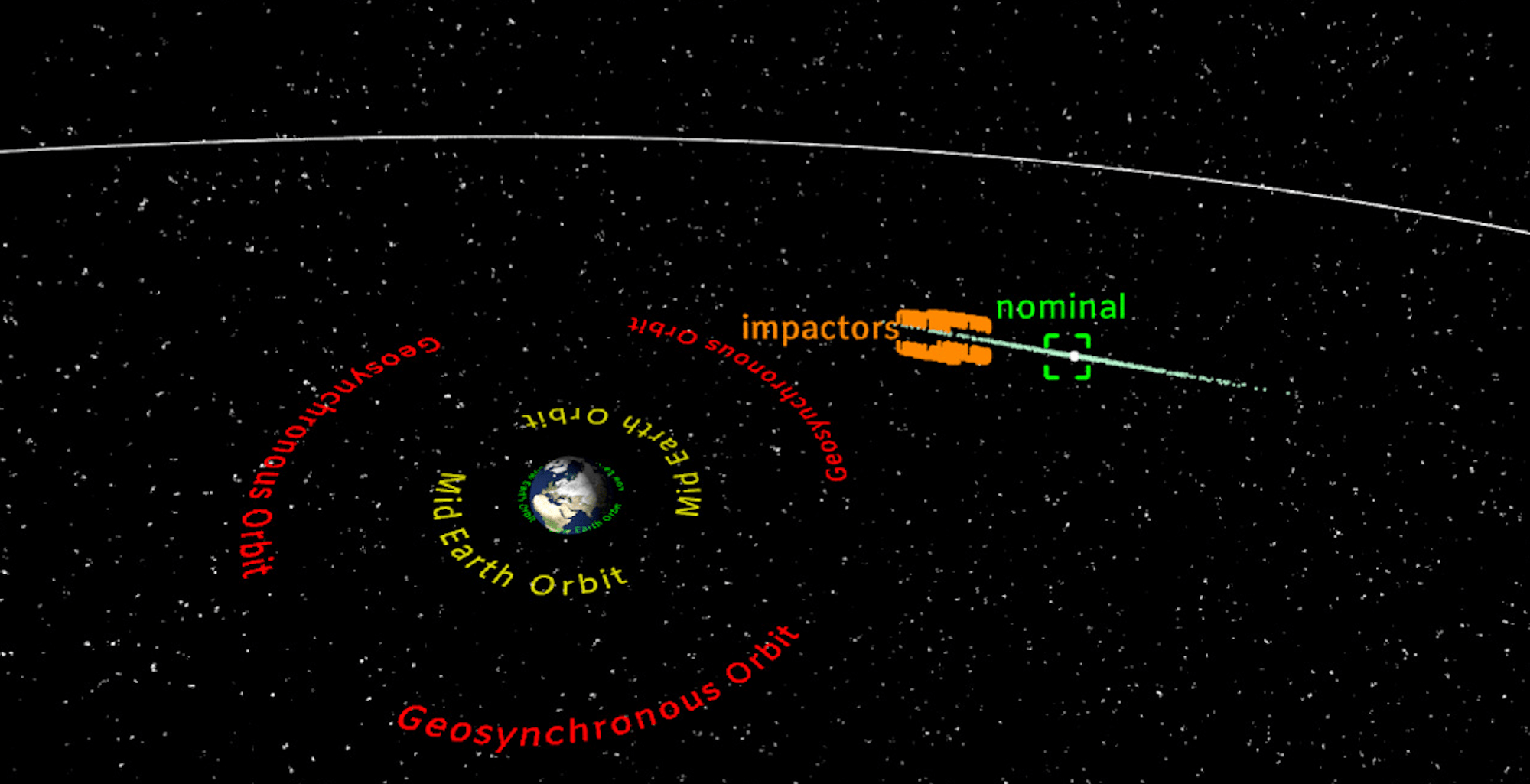

It’s extremely unlikely that a massive asteroid will strike Earth anytime soon. According to one astrophysicist, however, there is a possibility that certain events may increase the chance for a catastrophic rendezvous with the roughly 1,210-foot-wide space rock known as 99942 Apophis. And although the odds remain almost comically small, based on the available evidence, humanity certainly doesn’t want the situation to play out as theorized.
Apophis is one of the most studied near-Earth asteroids (NEAs) in history—not for any striking physical characteristics, but for its trajectory. Astronomers initially voiced concern about the possibility of a collision with Earth after discovering it in 2004, and put the odds of such a disaster at 2.7-percent. These calculations originally earned Apophis a Level 4 on the Torino impact hazard scale, the highest ever recorded. Soon, however, revised analysis indicated Apophis’ route was still relatively close to the planet, but safely outside any need for worry. By 2006, its Torino level was lowered to 0, where it has remained ever since. In 2021, NASA’s Jet Propulsion Laboratory indicated there was no chance of the asteroid hitting Earth within the next 100 years.

But as University of Western Ontario’s Paul Wiegert points out in his new study published in The Planetary Science Journal, these conclusions remain ironclad only so long as nothing influences its path. An encounter with another asteroid, even as small as 2-feet-across, may be enough to alter its route. Increase that object’s size to barely 11-feet, and it could bump Apophis enough to make it a problem for humanity when it reaches its closest proximity to Earth on April 13, 2029.
While Wiegert notes in his study abstract that “Apophis’s current trajectory takes it safely past our planet at a distance of several Earth radii,” that day, meeting another asteroid “like the ones that frequently and unpredictably strike Earth” may require astronomers to quickly revise their calculations.
To determine the likelihood of such a situation, Wiegert referenced the number of objects with diameters between 0.6 and 3.4 meters (1.96 and 11.15 feet) that pass through the planet’s atmosphere every year. This came out to roughly 120 smaller meteorites—and only one larger rock—annually. He then integrated those numbers into calculations for the probability of similar asteroids striking Apophis.
Should the stars (or, more accurately, asteroids) align, it would raise the odds of a date with Apophis to 10-8. As the study’s September 12 announcement explains, that new number “is, of course, low.” To put that into perspective, “the odds of just the right hit are likely 1-in-2 billion” for anything happening ahead of April 13, 2029. Calculating for Apophis’ future fly-bys in 2036 and 2068, this probability increases to 1-in-1 million—exponentially higher, yet still extremely unlikely.
[Related: What would we do if an asteroid slammed Earth on July 12, 2038?]
As for when humanity can be absolutely sure Apophis isn’t heading this way, Weigert says that won’t happen until 2027, when it becomes the easiest to observe for astronomers.
“The probability of a small asteroid colliding with any asteroid over the course of a few years or decades is tiny and indeed could be considered negligibly small in almost any other case,” Weigert explains in his study. “It is only this asteroid’s unusual trajectory and the attendant risk it poses to our planet that drives us to examine this scenario in detail here.”
But even if almost wholly unlikely, the “attendant risk” is worth considering. Astrophysicists estimate that Apophis’ size and speed would generate the energy equivalent to 1,200 megatons of TNT—enough to potentially create a 17,000-foot-wide crater. While not apocalyptic, it wouldn’t be pleasant. It would also ruin NASA’s plans to study it with their OSIRIS-APEX spaceprobe, on track to meet Apophis in June 2029.